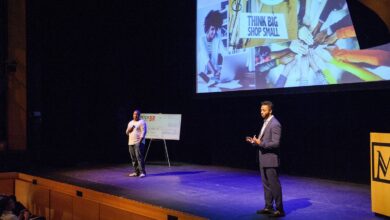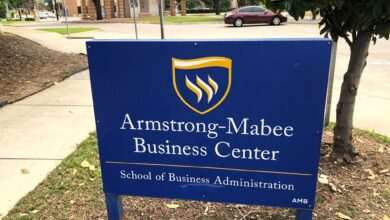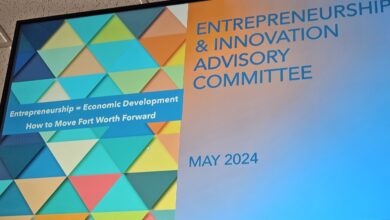Entrepreneurial Lessons From The Frontlines Of The Podcasting Scene In The Middle East

Opinions expressed by Entrepreneur contributors are their own.
You’re reading Entrepreneur Middle East, an international franchise of Entrepreneur Media.
Podcasting is in its infancy in the Middle East, and as with anything new, there are quite a few amazing peaks, and some challenging troughs. One certain thing though is that it is an exciting -and never dull- journey. Being a first-mover in any industry can feel a bit daunting and sometimes lonely, but I have found the journey to be profoundly satisfying and deeply rewarding. In 2020, I launched a podcast show called What I Did Next. As the host of the show, I welcome different guests from around the Middle East who discuss their life journeys. As we are currently in our seventh season, I can comfortably say that the show and I are no longer newcomers or in uncertain territory. We’ve been lucky enough to be recognized multiple times by the premier podcast service, Apple Podcasts, having been named one of their “Best Shows” in 2021, as well as being featured in “Podcasts that Make Us Think” in 2022.
The show’s ethos is simple: to connect the dots of our guests’ life journeys, to look at the twists and turns their paths have taken, to look at the paths not taken, to consider the happenstance of life, and to look at the essence of failure and success. We delve deep and have authentic discussions that, in many cases,are firsts for our guests. The show has seen some of the region’s most prolific business personalities talk freely about their personal rollercoasters, with all the unpredictability that entails. From the former Google X Chief Business Officer and host of the Slo Mo podcast, Mo Gawdat, to world-renowned heart surgeon, Professor Sir Magdi Yacoub, Lebanese jewellery designer Nadine Kanso, Fadi Ghandour, co-founder of Aramex, Hala Gorani, author and ex-CNN anchor, Sultan Sooud Al-Qasse- mi, academic and acclaimed art collector, to Dr. Lama Al Sulaiman, pioneering Saudi businesswoman, among so many others. The ongoing Season 7 has a great line-up as well, which includes Becky Anderson, CNN’s Managing Editor in Abu Dhabi, Hatem Alakeel, a trailblazing Saudi fashion designer and branding guru, bespoke artist Janan Shihadeh, and Moe El Fayed, the UAE-based founder and CEO of Grubtech.
As an Egyptian-American who grew up outside the Middle East, and with a career covering all aspects of the communications industry across the United States, the United Kingdom and Egypt, I feel I am well-placed to bring a fresh take on storytelling in the region. A strong underlying current of all I attempt to do with A&T Media -the enterprise I launched in 2021 that houses What I Did Next- is to promote positive narratives from the region, both for the region, and for those outside it. With the incredible dynamism shaping all industries across our region, there is a space for bringing those stories to a wider audience. That forms a strong part of my motivation.
In the meantime, the podcasting scene in the Middle East has also seen a massive transformation. Once a niche medium, it’s now growing to become a well-represented channel of content consumption. With global podcast advertising revenue estimated at US$10 billion, and the US market alone contributing around $4 billion, the MENA region is poised for exponential growth, equal to the US market. However, despite this potential, we’ve only just scratched the surface. The reasons are multifaceted, including a need for more understanding and awareness regarding podcasting’s value, a scarcity of content tailored to regional audiences, and a hesitancy among brands to invest. Furthermore, the creator communities in the region remain disjointed. Yet, despite the diverse cross-sections across multiple countries, there’s a significant opportunity to build larger, MENA-level communities. Such networks could foster knowledge-sharing, experience-exchange, and collective growth, a strategy that’s proven successful in other independent creative communities.
One of the most pressing challenges is the lack of regional data. In contrast to the United States, where quarterly qualitative podcast reports detail behavior changes, categories, and popular shows, the MENA region relies heavily on surveys and estimations. This gap hinders both creators and advertisers from fully understanding and leveraging the market’s dynamics. Monetizing content in a market still warming up to the digital revolution presents its own set of challenges. My own journey, carving a niche in this evolving landscape, sheds light on some of these issues. I have found that breaking through with audiences has been significantly easier than convincing brands that podcasting is a viable marketing tool. With budgets traditionally allocated to conventional media, marketing departments are still unclear about what their money will buy them, and some brands have yet to understand the potential of audio. What I Did Next has been sponsored and supported by avant-garde brands such as EFG Holding, who have seen the potential of connecting directly with an audience that reflects their values.
There’s a three-way trade-off we value among creators, listeners like ours (who trust our opinions and brand partnership choices), and the brands themselves, who are begin- ning to see measurable results. With more than half of podcast listeners in the United States now known to be more likely to buy a product after it has been advertised or suggested on a podcast, there’s a growing belief that podcasts are likely to show similar results in the Middle East. With a large professional, multilingual, multinational population across the region, A&T Media aims to provide high-quality, intellectually rigorous, and engaging content that resonates with podcast listeners. The Middle East is a natural market for great podcast content that is entertaining as well as provides a sense of connectedness. One of the big attractions of audio entertainment is the ease with which we can interact with it. We often listen to podcasts, while doing other things such as driving, walking, working out, and cooking. That makes it a very attractive medium for both advertisers and listeners. This ease of use was one of the elements that attracted me to podcasting as a business.
There are two distinct types of podcasts in the audio content universe. There are brand-owned shows, driven by consumer companies that want to build interest in their own brand– think Coke or Vodafone launching a podcast that promotes their products. The second style of podcast is editorial in nature, often with a strong narrative arch, and focused entirely on entertaining the listener. This is where a podcast like What I Did Next lives.
Like all nascent industries, podcasting in the Middle East is an evolving medium. It is finding its footing as a communication channel, and as an additional tool in the marketers’ arsenal, and it will be shaped as much by the region’s habits, likes, and dislikes, as it has been in other more established markets like the US and Europe. As I look forward, A&T Media’s mission remains unchanged: to leverage the power of storytelling to bridge cultures, foster understanding, and create a shared space for dialogue and discovery. I’ll forge ahead, learning from fascinating individuals who inspire, challenge, and lead the way in their respective fields.
Related: Reclaiming Our Voices: The Rise Of The Female Storytellers



